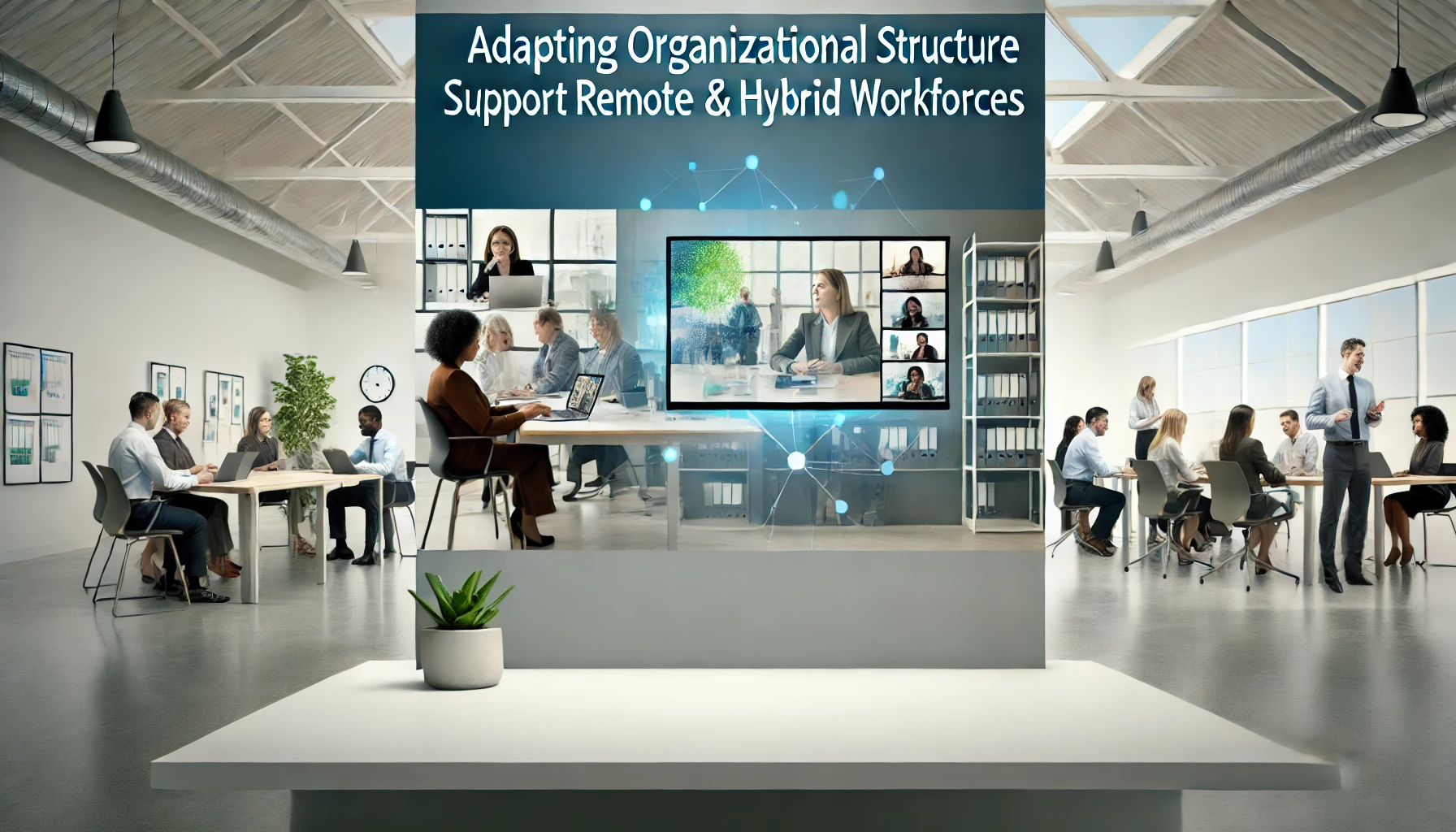Adapting Organizational Structure to Support Remote and Hybrid Workforces
 Samantha Lee
Samantha Lee
Hello, I’m Samantha Lee, and today I want to talk about a topic that has been at the forefront of many business discussions recently: adapting organizational structures to support remote and hybrid workforces. The global shift towards remote work has been nothing short of revolutionary. It has forced organizations to rethink their traditional structures and embrace new models that can support a distributed workforce.
Embracing Change
When COVID-19 occurred, several firms had to quickly transition to working from home. Some companies found this transition to be a temporary solution; other corporations adopted a work from home policy. As someone who has gone through this change, I can tell you how difficult it can be.
In order to adapt to remote or hybrid working conditions, the first thing you need to realize is that the old top-down management system may no longer serve its purpose well enough. This is because strict lines of authority exist within a physical office setting. Nonetheless, in environments with both off-site and on-site employees, these strict lines can cause delays in making decisions and jam up communication channels.
Flattening the Hierarchy
One of the most significant changes we made in our organization was flattening the hierarchy. By reducing the number of management layers, we were able to streamline communication and empower employees to make decisions more autonomously. This not only increased efficiency but also boosted morale, as team members felt more trusted and valued.
In a flattened hierarchy, team leads play a crucial role. They act as the bridge between senior management and the workforce, ensuring that information flows smoothly and that employees have the support they need. Regular check-ins and virtual meetings help maintain this connection and ensure everyone is aligned with the company's goals.
Building a Flexible Structure
Flexibility is the cornerstone of a successful remote or hybrid organization. Rigid structures can stifle innovation and limit the ability to respond to changing circumstances. To build a flexible structure, we adopted a project-based approach. Instead of having fixed teams, we formed cross-functional groups based on the needs of specific projects. This allowed us to leverage diverse skill sets and perspectives, fostering creativity and problem-solving.
In a project-based structure, clear communication and defined roles are essential. Each project team should have a leader who is responsible for coordinating efforts and ensuring that deadlines are met. Regular virtual stand-ups and progress reports keep everyone on track and provide opportunities to address any issues that arise.
Leveraging Technology
Technology is the backbone of any remote or hybrid organization. Without the right tools, it’s nearly impossible to maintain productivity and collaboration. We invested in a suite of digital tools that facilitated communication, project management, and collaboration. Platforms like Slack, Microsoft Teams, and Zoom became indispensable in our daily operations.
In addition to communication tools, we implemented project management software like Trello and Asana. These tools allowed us to track progress, assign tasks, and manage deadlines efficiently. By centralizing our work on these platforms, we ensured that everyone had access to the information they needed, regardless of their location.
Fostering a Strong Culture
One of the biggest challenges of remote work is maintaining a strong company culture. Culture is the glue that holds an organization together, and it can be difficult to cultivate when team members are dispersed. We made a conscious effort to prioritize culture by organizing virtual team-building activities, celebrating successes, and promoting a sense of community.
Regular virtual social events, like happy hours and game nights, helped build camaraderie and strengthen relationships. We also encouraged employees to share their experiences and challenges through virtual forums and discussion groups. This open communication fostered a sense of belonging and supported our efforts to create an inclusive and supportive work environment.
Supporting Employee Well-being
Remote and hybrid work can blur the boundaries between work and personal life, leading to burnout and decreased productivity. To address this, we implemented policies and practices that supported employee well-being. Flexible working hours, mental health days, and wellness programs were some of the initiatives we introduced.
We also provided resources for remote work ergonomics, ensuring that employees had the necessary equipment and setup to work comfortably from home. Regular check-ins with managers helped identify any issues early on and provided an opportunity for employees to discuss their well-being and workload.
Ensuring Equity and Inclusion
Equity and inclusion are critical considerations when adapting to remote and hybrid work. It’s essential to ensure that all employees have equal access to opportunities, regardless of their location. We reviewed our policies and practices to identify and address any potential biases that could disadvantage remote workers.
Training programs on diversity, equity, and inclusion were rolled out to all employees, emphasizing the importance of creating a fair and inclusive work environment. We also implemented measures to ensure that remote workers had the same opportunities for career development and advancement as their in-office counterparts.
Continuous Improvement
Adapting to remote and hybrid work is an ongoing process. What works today may not be effective tomorrow, so it’s important to continuously assess and refine your approach. We regularly solicited feedback from employees to understand their experiences and identify areas for improvement.
Surveys, virtual suggestion boxes, and open forums provided valuable insights into what was working well and what needed adjustment. By maintaining a culture of continuous improvement, we were able to stay agile and responsive to the evolving needs of our workforce.
Conclusion
Adapting organizational structures to support remote and hybrid workforces requires a holistic approach. It involves rethinking traditional hierarchies, embracing flexibility, leveraging technology, and fostering a strong company culture. It also requires a commitment to supporting employee well-being and ensuring equity and inclusion.
As we continue to navigate this new world of work, it’s clear that the benefits of remote and hybrid work are significant. By embracing these changes and continuously striving to improve, we can create organizations that are more resilient, innovative, and inclusive.
I hope you find these insights helpful as you embark on your own journey to adapt and thrive in this new era of work.
Subscribe to my newsletter
Read articles from Samantha Lee directly inside your inbox. Subscribe to the newsletter, and don't miss out.
Written by

Samantha Lee
Samantha Lee
Samantha Lee is a seasoned professional in document design and workflow optimization with over a decade of experience in enhancing office productivity. Holding a degree in Business Administration from the University of Michigan, she has honed her expertise in streamlining processes through innovative document management solutions. Samantha has worked with a variety of corporations, helping them implement effective templates and automated processes that save time and reduce errors.